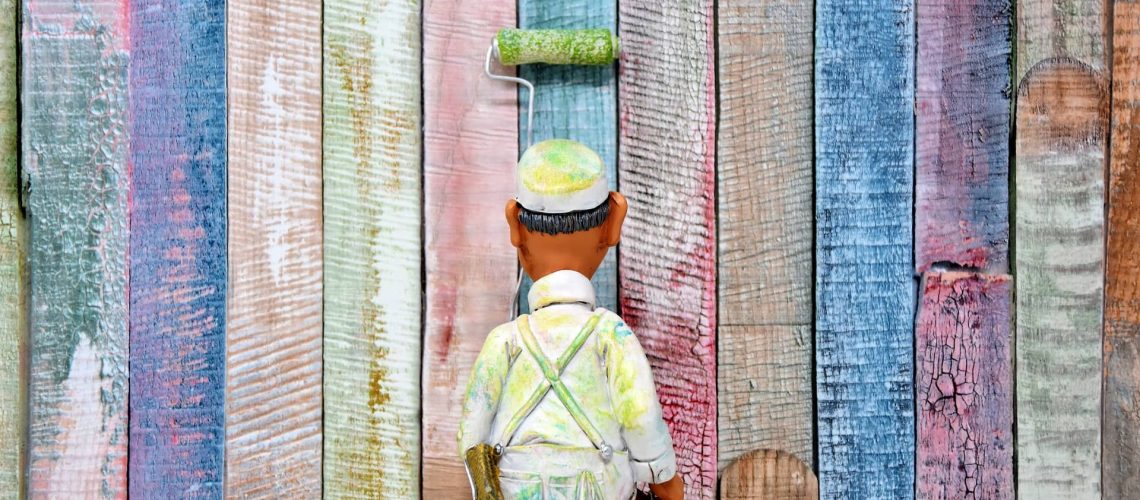Many homeowners tend to miss their home’s outside walls when planning a home improvement project. This is not surprising since the paint on these walls tend to last long. Often, the need to repaint only surfaces after four to six years. This is not a hard rule, though!
You do not have to wait for the paint job on your exterior walls to show signs of wear and tear like cracking or peeling to repaint. You can do it anytime you want to. In fact, if you intend to sell your house, painting your exterior walls is highly recommended.
Why?
“The appearance of your home’s exterior matters, especially if you are putting it on the market. It affects your property’s curb appeal and potential to attract would-be buyers. It also impacts your home’s value. Hence, it is wise not to take your exterior walls for granted.”
So, exterior house painting should be on your agenda if you want your house to look good as new.
Be forewarned though:
Exterior painting is more challenging than interior painting. There should be careful planning if you want an output that is aesthetically appealing and durable. This means picking the best time to do the project and choosing the right colour combination.
When Should You Schedule Exterior House Painting?
The weather condition is the one of the important factors that needs to be considered when deciding on an outdoor painting schedule.
“When you are dealing with external walls, you are at the mercy of the weather. You need to check weather forecasts before you can start the project. Ideally, you should have a temperature of 2℃ for at least three days to give you time to apply the paint and time for it to cure. Furthermore, there shouldn’t be any rain.”
For a number of professional painters in Ireland, the ideal time to schedule this type of project is during spring or summer.
Why spring?
The weather during this season, particularly the early weeks, is neither too hot nor too cold. Moreover, temperature fluctuations in spring during the day and at night are minimal.
“An extreme change in temperature during the drying process can negatively impact the quality of the paint job. For example, a significant drop in temperatures at night exposes the curing paint to moisture which in turn can seep through the substrate and prevent the paint from sticking well to the surface.” This is why it is important that there is no drastic change in daytime and nighttime temperatures.
On the other hand, some painting contractors prefer doing outdoor painting in summer. “During this season, the chance of rain is low to none and the weather is generally warm. These conditions make it possible to work outdoors and more importantly, for paint to cure properly.”
A word of caution:
It is not advisable to schedule this task in the middle of summer when temperature is soaring.
“When it is too hot, paint will dry extremely fast. This results in poor adhesion and imperfections on the paint finish, i.e., appearance of brush marks and paint clumps. Moreover, the paint may bubble or blister if the temperature hits 100◦F.”
So, if you wish to paint outdoors in summer, do it during the early weeks of the season just like in spring.
What Paint Colours Should You Use for Exterior Walls?
Another fairly common problem amongst homeowners embarking on this task is choosing paint colours.
This is understandable given the plethora of hues available. Moreover, there is also the pressure of picking the right colour combination at the onset since an entire neighbourhood sees the output.
For this task, some of the factors you need to consider are the colour schemes in your neighbourhood, particularly the houses adjacent to yours.
“The exterior paint colour of your neighbours’ homes matter, especially if these structures are situated close to each other. In this case, you need to pick colours which blend with theirs, so your house won’t look out of place.”
“You can also draw inspiration from the landscapes surrounding your property. If you have hardscapes like stonework, grey, slate blue and white are good colours to work with. Meanwhile, if your house is nestled in a verdant area with trees and shrubs, consider earthy colours for your siding.”
Basically, you need to pick at least three paint colours. These are for your walls, trims and accents. “The general rule of thumb is that the field colour (the one used for walls or siding) should contrast with the trim colour. So, if you picked a dark tone for your walls, go for a light hue for the trims… Meanwhile, the accent colour should complement your trim colour.”
You can view home improvement or interior design magazines to have an idea on the hues you should use. Alternatively, you can consult a decorator and even your painting contractor. These experts, with their training and experience, can undoubtedly provide excellent recommendations.
In summary, painting exterior walls can have a tremendous impact on the overall look of your house. So, don’t leave this task off your plan when you renovate your home. More importantly, make sure you hire a professional painting contractor to do the job to get the best paint job!
Entrust exterior home painting projects to Painting Dublin – trusted professional painting company in Ireland. Call us today at 086 608 1817 / 085 139 0233!
—
Image by Capri23auto from Pixabay
